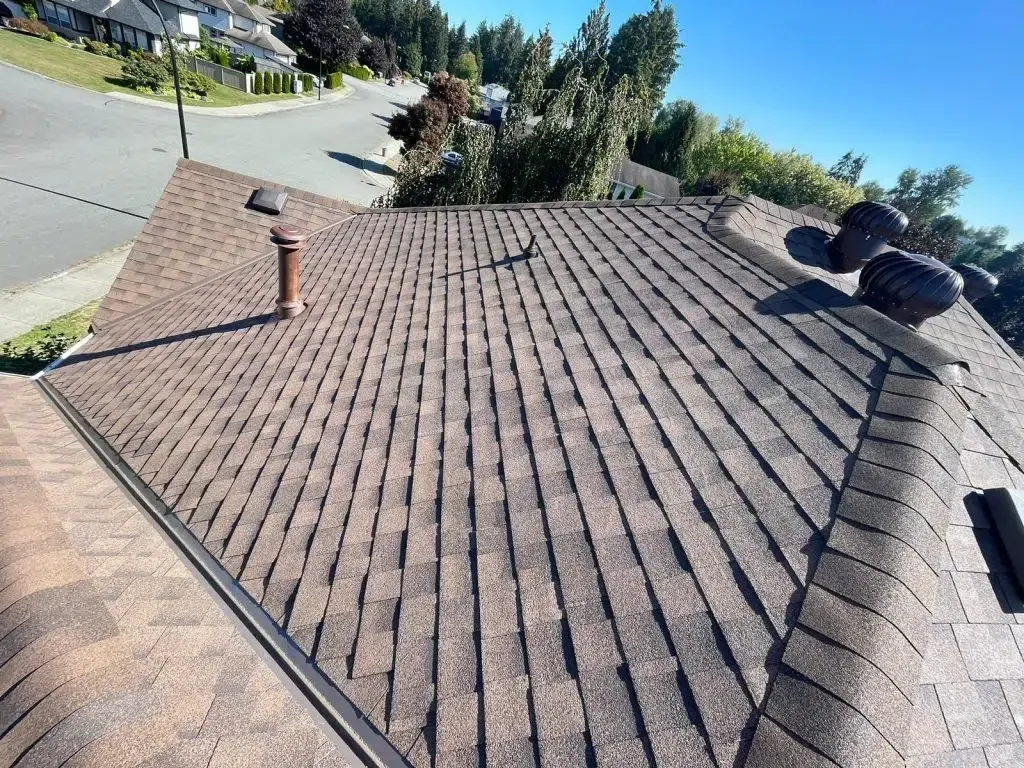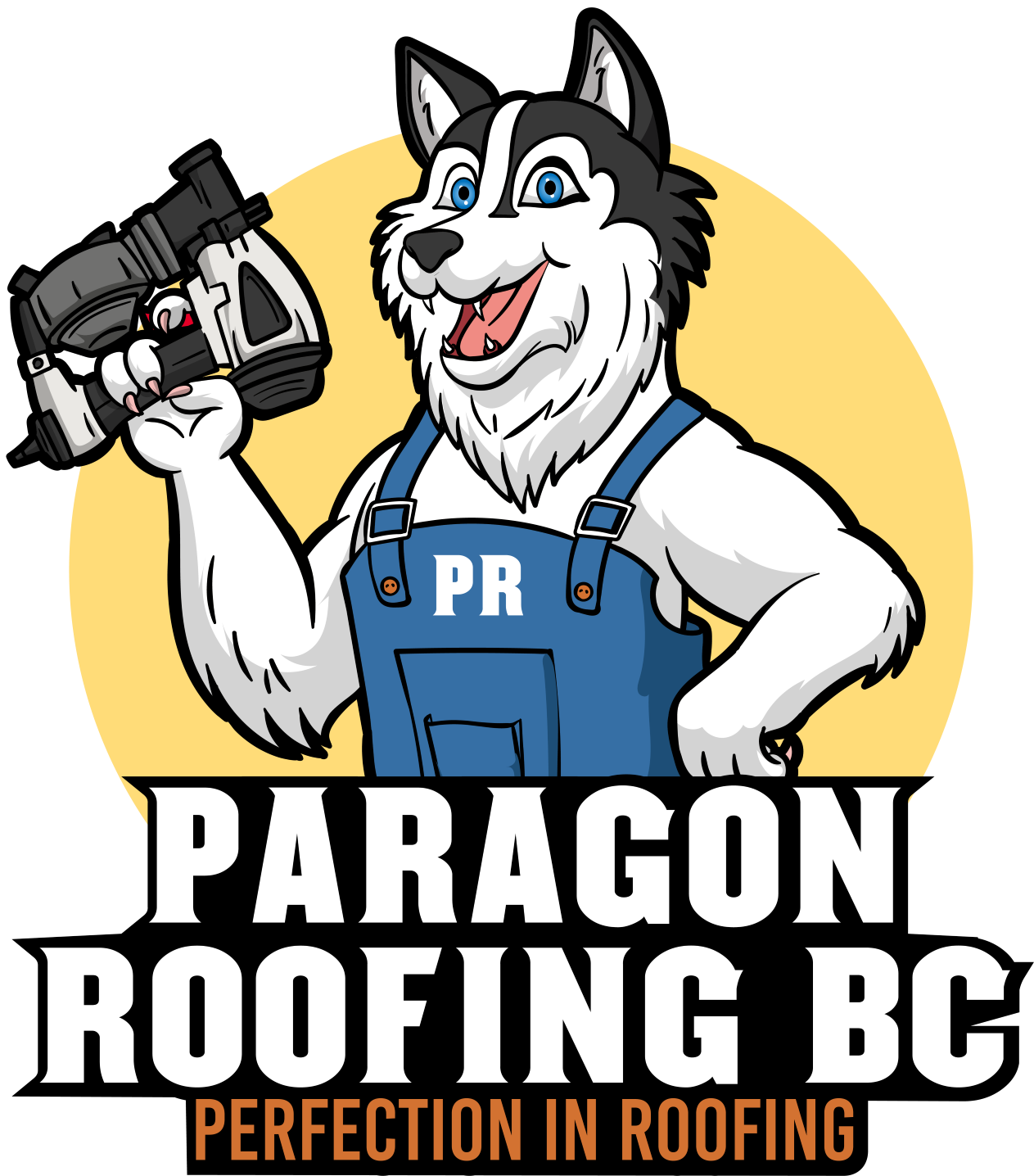In Vancouver, PV on metal roofs works beautifully— when you match the attachment to the roof profile and follow Vancouver/RCABC rules. On standing seam, use non-penetrating seam clamps; on exposed-fastened/corrugated, use profile-specific brackets with sealed fasteners; for penetrations, build RCABC-compliant curbs/split-panel flashings(not rubber boots on 15-year guarantees). ([Metal Construction Association][1])
solar-ready standing seam Vancouver · strata/warranty rules for metal roofs · rain sound tests on a metal roof
Need help with roofing in Vancouver ? Get a same-week assessment.
What works on which metal roof (quick map)
Standing seam (concealed-fastener)
- Best practice: seam clamps that grab the rib with setscrews (no holes in the panel). Pair with rail-based racking or rail-less module clamps tested/listed to UL 2703. Many systems maintain roof warranties when used as designed and matched to the seam profile. ([S-5! Metal Roof Attachments][2], [Metal Construction Association][1], [UL Solutions][3])
Exposed-fastened trapezoidal & corrugated
- Use profile-specific brackets(e.g., trapezoid or corrugated mounts) that fasten on the crown/rib, above the water plane, with EPDM gaskets and stainless/compatible hardware. These are designed and tested for uplift and watertightness and can support either rails or rail-less kits (UL 2703). ([S-5! Metal Roof Attachments][4], [EcoFasten][5])
Insulated metal panels (IMPs) & specialty profiles
- Use manufacturer-approved brackets or rails designed for IMP skins; general-purpose wood-deck details often don’t apply. Confirm listing to UL 2703 and follow the panel maker’s pull-out data. ([Metal Construction Association][1])
Copper or dissimilar-metal situations
- Avoid galvanic pairs that accelerate corrosion (e.g., copper against steel/aluminum/zinc). Preferred attachment metals for coated steel/aluminum/zinc roofs are aluminum alloys and 300-series stainless; for copper roofs, use brass or stainless. ([Metal Construction Association][6], [Metal Construction Association][1], [pv magazine USA][7])
Clips vs. rails vs. rail-less: which to choose (and why)
| Choice | Where it shines | Watch-outs |
|---|---|---|
| Seam clamps + rail-less kits | Fast installs, fewer parts, excellent on standing seam; low added weight | Requires precise module/frame compatibility and UL 2703 listing for the kit/module pair; wire management is critical |
| Seam clamps + rails | Easiest alignment/row straightness; robust wire pathways; easy MLPE cable dressing | More components; slightly higher wind profile and freight |
| Profile brackets (exposed-fast.) + rails/rail-less | Strong, watertight when mounted at rib crowns with gaskets; widely tested | Fastener selection, torque, and gasket compression must match the bracket’s engineering; keep screws out of valleys |
Across all options, insist on UL 2703-listed mounting (bonding/grounding, structural tests, and fire classification of the module+racking assembly). That keeps you aligned with code and maintains the roof’s fire performance. ([UL Solutions][3], [Intertek][8])
Penetrations: when you must—and how to do them right
Vancouver’s metal roofs are commonly water-shedding assemblies under RCABC’s ASM Standard. For projects seeking the RoofStar 15-Year Guarantee, the standard requires that all penetrations be flashed using a split-panel detail; flexible boot flashings with gasketed screws are not permitted. In practice, that means a framed curb or split-panel wrap with metal flashings sequenced shingle-fashion.
For exposed-fastened/corrugated roofs, use the bracket system’s tested fasteners(stainless-capped or equivalent) with the pre-applied EPDM gasket compressed to spec. Avoid ad-hoc screws, sealants, or “whatever’s in the truck.” The bracket manufacturer’s load tables and installation instructions are part of the listing. ([S-5! Metal Roof Attachments][4])
When to choose penetrations over clamps:
- Non-seamed profiles where seam clamps don’t apply.
- Tall tilt legs on low-slope roofs needing engineered standoffs/curbs.
- Heavy over-roof equipment (walkways, inverters) that needs direct structural load paths.
In each case, detail like a small roof: curb, underlayment laps, counterflashing, and RCABC-compliant metal flashings.
Vancouver permits, loads, and submittals (what the City actually asks for)
The City of Vancouver requires an electrical permit for all PV and may require a building permit depending on roof changes and loads. The City’s residential PV guide spells out three routes (full BP, BP without structural engineer, or BP with a comfort letter) and lists thresholds that can streamline approvals when met. Highlights:
- A building permit may not be required if your house meets modern code, you have light roofing, and the PV is ≤ 5 lb/ft² with point loads < 70 lb per attachment, kept ≥ 2 ft from roof edges/peaks, parallel to the roof, and CSA/ULC-approved.
- If you exceed those (or use ballast, change structure, etc.), you’ll need the appropriate permit path and documentation.
- Submission typically includes a site/roof plan, panel layout, rack attachment details, and product approvals. ([City of Vancouver][9])
BC Hydro accepts grid-tied PV under its Self-Generation(formerly Net Metering) program; plan interconnection early so your electrical design, metering, and inspection line up. ([bchydro.com][10])
Wind, seismic, snow—and what they mean for attachments
Vancouver’s roofs see wind-driven rain and marine air, moderate ground snow, and seismic considerations under the Vancouver Building By-law. For PV, that translates to:
- Mechanical fastening(not ballast) on pitched roofs.
- Edge and corner zones with higher uplift—clamp/bracket spacing tightens there per the racking engineering.
- Listed racking with published load tables(UL 2703) and module pairing.
- Compatible metals: aluminum and 300-series stainless hardware on coated steel/aluminum/zinc roofs; avoid copper contact unless you specifically design for it. ([City of Vancouver][9], [UL Solutions][3], [Metal Construction Association][1])
Corrosion & coastal exposure (don’t sabotage your roof)
Salt air plus dissimilar metals is a classic way to ruin a metal roof. Follow these basics:
- Match materials: use aluminum/stainless attachments and stainless fasteners on coated steel/aluminum/zinc roofs; for copper roofs, use brass/stainless. ([Metal Construction Association][1], [pv magazine USA][7])
- Isolate where needed (neoprene/EPDM gaskets or polymer isolators) and keep filings/fines off the roof.
- Mind warranties: many finish/substrate warranties have coastal distance clauses and compatibility rules; pick attachments that preserve the roof warranty. (RCABC also flags compatibility and accepted-materials requirements for guarantee projects.) ([RCABC Roofing Practices Manual][11])
Wire management, fire classification, and maintenance
- UL 2703 isn’t just “a racking stamp”—it covers bonding/grounding, structural tests, and roof-assembly fire classification with the specific module+rack combo. Use only listed pairings. ([UL Solutions][3])
- Keep conductors off hot/abrasive surfaces using listed clips, protect penetrations with conduit entries at curbs/flashings, and leave service aisles for maintenance. (Good wire management prevents abrasion and noise; it’s also what inspectors look for.) ([Metal Construction Association][1])
- Build a roof access/maintenance plan into the design: walkway pads where needed, array gaps at hips/valleys, and a simple O&M log (photos, torque checks, cleaning). RCABC guarantee projects expect documented maintenance. ([RCABC Roofing Practices Manual][12])
Installation patterns I recommend (by roof type)
Standing seam (best-case Vancouver scenario)
- Seam clamps matched to the exact seam profile (engineering sheet in hand).
- Rail-less UL 2703 kit for speed—or rails if you want extra cable space.
- Clamp rows aligned to engineering for uplift zones; more clamps at edges/corners.
- No panel penetrations.
- Wire management with listed clips; conduit to a curb/penetration detail at a ridge or high wall. ([Metal Construction Association][1], [UL Solutions][3])
Exposed-fastened/corrugated
- Profile-specific brackets on rib crowns with EPDM gaskets, stainless/compatible screws to spec.
- Rail-based or rail-less (listed) per your module pairing and layout.
- Keep brackets out of valleys; follow the bracket’s pull-out and spacing tables, especially in corner zones. ([EcoFasten][5], [S-5! Metal Roof Attachments][13])
Where penetrations are unavoidable
- Build RCABC-compliant curbs; on RoofStar 15-Year, use split-panel flashings—not rubber boots.
- Sequence membranes and flashings shingle-fashion; cap/termination per ASM details.
- Log every penetration in the as-builts for future service.
Cost & logistics notes (so projects don’t stall)
- Paperwork first: use the City’s checklist to determine whether you fit the “no building permit” path or need a BP/comfort letter. Bring attachment details and the UL 2703 data sheet to intake. ([City of Vancouver][9])
- Module pairing: some rail-less kits are module-specific; switching panels late can invalidate the listing. Verify before ordering. ([UL Solutions][3])
- Edge offsets: keep arrays ≥ 2 ft from edges/peaks unless engineered otherwise (it also helps wind performance and maintenance access). ([City of Vancouver][9])
- Interconnection: start BC Hydro Self-Generation paperwork early to align inspection and meter changeover. ([bchydro.com][10])
People Also Ask — snippet-ready answers
Can I mount solar on a standing seam metal roof without drilling holes?
Yes. Use profile-matched seam clamps
that grip the rib; pair them with UL 2703-listed
rail or rail-less hardware. No panel penetrations are needed. ([S-5! Metal Roof Attachments][2], [UL Solutions][3])
What’s the right way to mount PV on corrugated metal?
Use corrugated/trapezoid brackets
fastened at the rib crowns
with EPDM-gasketed
stainless/compatible screws—never improvised fasteners in valleys. ([EcoFasten][5])
Do PV penetrations void a Vancouver/RCABC metal-roof guarantee?
Not if you follow the ASM Standard. For 15-Year RoofStar, penetrations must use split-panel(curb-style) flashings; flexible boots
with gasketed screws are not allowed.
Do I need a building permit for solar in Vancouver?
Always an electrical permit; a building permit may not be required
if you meet weight, point-load, setback, and product-approval criteria. Otherwise, use the City’s BP or comfort-letter pathways. ([City of Vancouver][9])
Will PV racking affect my roof’s fire rating?
Yes— UL 2703
evaluates racking for bonding, structure and fire classification
as a system with specific modules. Use listed pairings to maintain roof fire performance. ([UL Solutions][3])
What about corrosion near the ocean?
Use aluminum/300-series stainless
attachments on coated steel/aluminum/zinc roofs; avoid copper-to-steel/aluminum
contact to prevent galvanic corrosion. ([Metal Construction Association][1])
Mini-guide: Submittal checklist for a clean approval
- Roof plan with array layout, clear edge/peak offsets. ([City of Vancouver][9])
- Attachment schedule: clamp/bracket model, spacing, engineering tables for wind zones. ([Metal Construction Association][1])
- UL 2703 documentation for the racking/kit and specific module. ([UL Solutions][3])
- Conductor & bonding plan: wire clips, MLPE locations, equipment/bonding jumpers. ([UL Solutions][3])
- Curb/penetration details(if any), drawn to RCABC ASM.
- Electrical permit application and BC Hydro Self-Generation interconnection. ([bchydro.com][10])
Troubleshooting: mistakes that cause leaks or red-tags
- Using generic screws in the panel valley. Brackets are designed to mount high on the rib; valleys pond water and see the heaviest flow. ([EcoFasten][5])
- Skipping the listing. Rail-less kits and some rails are module-specific; no listing, no pass. ([UL Solutions][3])
- Rubber boots on a RoofStar 15-Year project. Not allowed—use split-panel/curb flashings.
- Copper bus or clips touching coated steel/aluminum. That’s a galvanic recipe for corrosion. Isolate or pick compatible metals. ([Metal Construction Association][6])
- Edge distances too tight. Vancouver’s guide calls for ≥ 2 ft clear unless engineered—also better for wind and maintenance. ([City of Vancouver][9])
Final take (owner’s perspective)
If you’ve got a standing seam roof in Vancouver, seam-clamp + UL 2703 hardware is the cleanest, driest, and most roof-friendly path— no holes in the panels. On exposed-fastened/corrugated roofs, choose profile-specific brackets that fasten on the rib crowns with gaskets and compatible stainless/aluminum hardware. When you must penetrate, build RCABC-compliant curbs/split-panel flashings, not ad-hoc boots, especially if you want 15-Year RoofStar coverage. Wrap it in a tidy permit package (City checklist, UL 2703 docs, attachment tables), mind galvanic compatibility for the coast, and your PV array will sit tight through November rain— without voiding your roof warranty or your peace of mind. ([S-5! Metal Roof Attachments][2], [UL Solutions][3], [City of Vancouver][9], [Metal Construction Association][1])
solar-ready standing seam Vancouver · strata/warranty rules for metal roofs · rain sound tests on a metal roof
Need help with roofing in Vancouver ? Get a same-week assessment.
—
References
- Metal Construction Association — PV on Metal Roofs
- S-5! — Standing Seam Roof Clamps
- UL 2703 — PV Mounting Systems Certification
- S-5! — Protea™ Bracket (Exposed Fastener)
- EcoFasten — CorruSlide
- MCA — Dissimilar Metal Corrosion
- pv magazine USA — PV & Metal Roofs
- Intertek — UL 2703 Overview
- City of Vancouver — Solar PV Permit Guide
- BC Hydro — Self-Generation
- RCABC — ASM Systems Standard
- RCABC — RoofStar Guarantee
- S-5! — CorruBracket™




